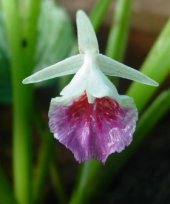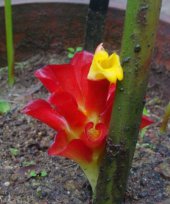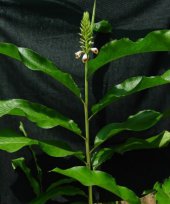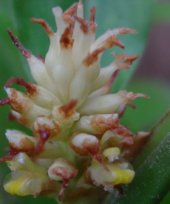gingerscat-Live Collections of Gingers in the Calicut University Botanical Garden (CUBG). CUBG harbours the largest live collection of gingers in India and third in the world. This include the almost all collections so far reported taxa from India except one or two and also beautiful collection of exotic gingers.
-
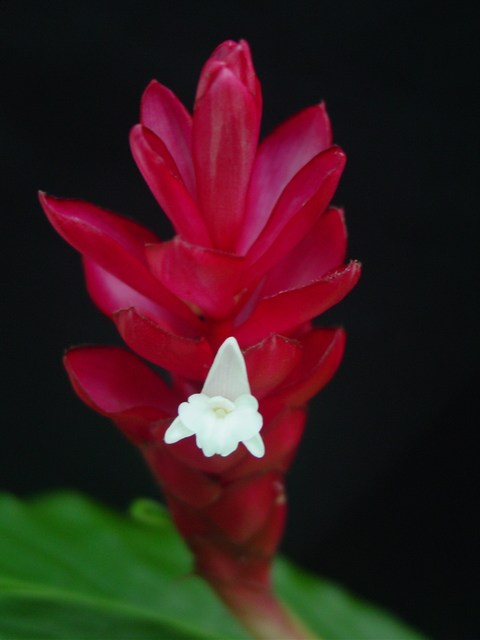
Alpinia Roxb. (nom. cons.)
Asiat. Res. 11: 350. 1810
The largest genus in the family with about 250 species distributed tropical and subtropical Asia. They are medium sized to large forest plants. Inflorescence terminal spike in most species In India the genus is represented by 15 species along with 3 exotic ornamentals.
Read More 
-
-
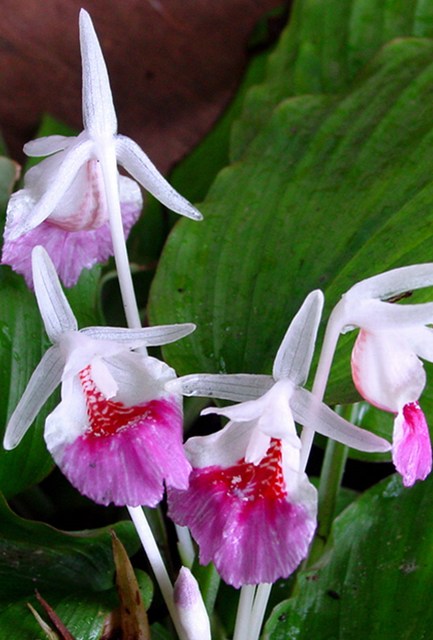
Boesenbergia O. Kuntze.
Rev. Gen Pl. 2: 685. 1891
Small forest plants with shoots consisting of 1- few leaves. Often with purple sheaths. Inflorescence radical or terminal, bracts distichous, each subtending one single flower. It comprises of about 80 species throughout tropical Asia. Distributed from India to Malaya. In India the genus is repreesented by 6 species with 2 endemics.
Read More 
-
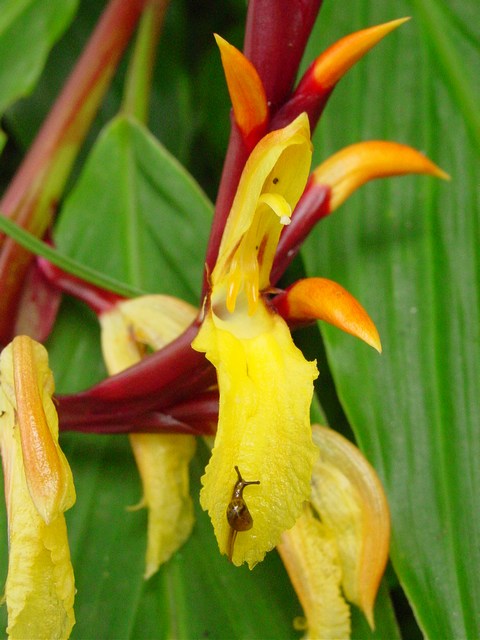
Cautleya (Royle)
Bot. Mag. 114: t. 6991. 1888
Herbs with thick root fibers, flowers yellow in terminal spikes. A genus with 5 species mainly distributed in India, Bhutan, Nepal and Myanmar. In India they are represented by 5 species and are mainly concentarted in high altitudes of Himalayas and Northeastern regions.
Read More 
-
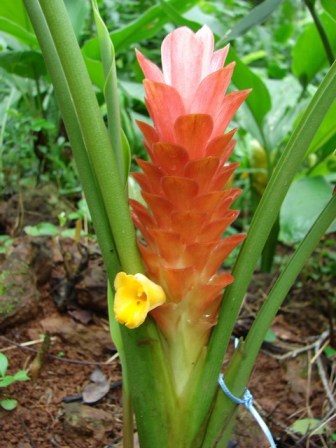
Curcuma L.
Sp. Pl. 2. 1753
The genus is of great economic importance and at the same time is one of the rather difficult genera with in the family. With about 120 species distributed mostly in tropical and subtropical Asia with a few species extending to Australia and the Pacific region. In India the genus has maximum species diversity in Peninsular Indian region. They are perennial rhizomatous herbs; Inflorescence terminal or lateral spike formed of spirally arranged bracts. Upper bracts are brightly coloured and are called coma.
Read More 
-
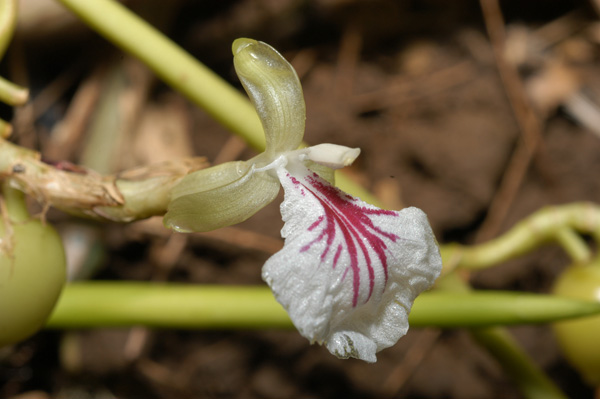
Elettaria Maton
Trans. Linn. Soc. 10: 250. 1811.
The genus Elettaria consist of about 8 species, known from Sri Lanka to Malaysia and Indinesia. They are characterised by front like leafy shoots, long porstrate inflorescence born from the rhizome and flowers in cincini with tubular bracteoles.The cardamom of commerce is obtained from Eletttaria cardamomum Maton. And is the only species represented in India and is believed to be a native of moist evergreen forest in South India especially southern-Western ghats.
Read More 
-
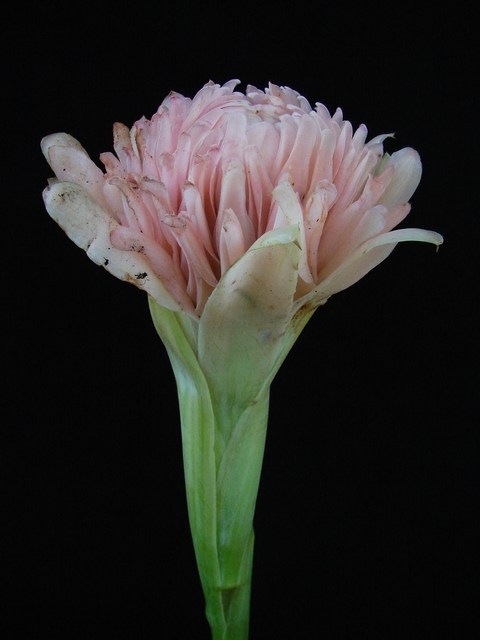
Etlingera Giseke
Prael. Ord. Nat. 209, 229, 251. 1792.
Etlingera is the inclusive name for Achasma Horan., Geanthus Val. NicolasiaHoran.. Large gregarious gingers with radical showy inflorescence characterised by involucre of sterile bracts, a short as much elongated peduncle, tubular and elongated bracteoles, and a distinct tube between the base of the corolla ubes and the base of filament and labellum. Distributed in Southeast Asia with about 40 species. In India it is represented by only 2 species.
Read More 
-
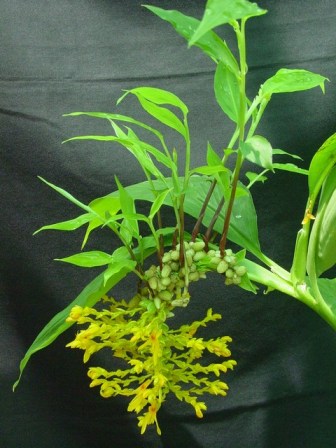
Globba L.
Mant. 2:170. 1771.
Commonly called as 'dancing ladies', consist of about 100 species mainly distributed in tropical Asia with maximum diversity in Malaysia, Thailand and Myanmar. In India it is represented by 13 species including recently transferred species of Mantisia Sims. and are widely distributed in Western India, South India and Andaman & Nicobar Islands. It is characterised by relatively small labellum, attached with the filament forming on andrecial tube above the attachment of corolla tubes, and long arching filament like a fish-hook and the anther at the distal end..
Read More 
-
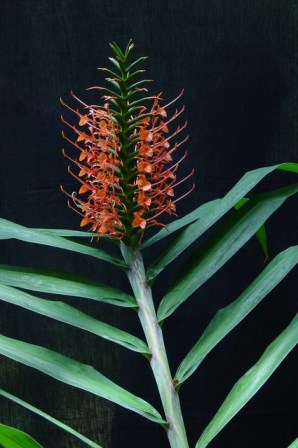
Hedychium Koen.
Retz., Obs. Bot. 3: 61 1783.
Commonly called as 'ginger lily' or 'butterfly lily'. This is the largest genus of the family in India, with about 43 taxa, including 17 endemics, mostly restricted to Northeastern India. It comprises of approximately 80 species, distributed mainly in India., Soth China and Southeast Asia. Medium sized gingers some are epiphytic. Inflorescence terminal on leafy stems, flowers showy and sweet scented. The flowers are irregular and the most attractive parts are petaloid lateral staminodes and labellum.
Read More 
-
-
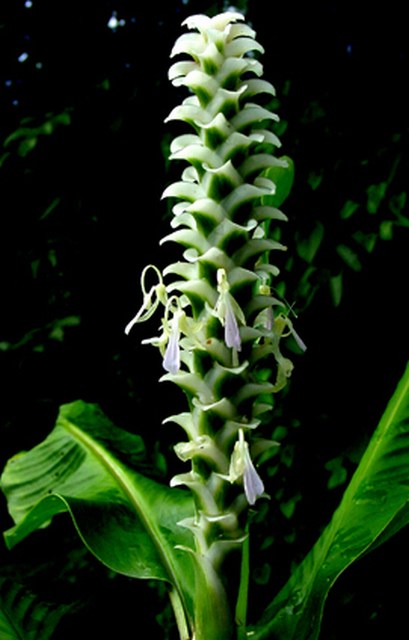
Hitchenia Wall.
Trans. Med. Phys. Soc. Calcutta 7: 215. 1835.
The genus comprises of only 3 species distributed in North and Northeastern India and Myanmar. In India it is represented 2 species and with 1 endemic species. The genus looks Similar to Curcuma having broadly oblong-lanceolate leaves and thick fleshy rhizomes. Inflorescence a terminal compact spike.
Read More 
-
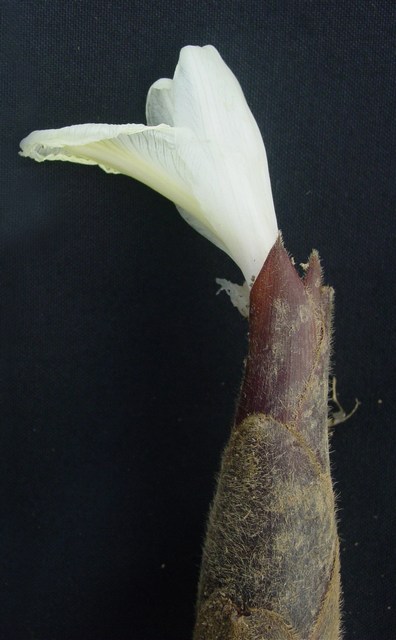
Hornstedtia Retz.
Obs. Bot. 6: 18. 1791.
Medium ized, or more commonly very tall gingers. Leafy shoot is coarse, often swollen at the base. Inflorescence arrising on a seperate sich shoot, is some what spindle-shaped, on a very short peduncle covered with slift involucral bracts. It comprises of about 40 species, extends from East himalaya to New Guinea and Northern Quenisland. In India it is represented by only 2 species. Hornstedtia fenzlii (Kurz) K.Schum. is transferred to Etlingera.
Read More 
-

Kaempferia L.
Sp. Pl. 2. 1753.
Small herb with short rhizomes and tuberous roots. The lateral staminodes are large. Bifid labellum and the two staminodes form a flat, quadrate structure giving the impression of a 4-merous floer. The genus which spread throughout tropical Asia with the centre of diversity in monsoon Asi, where Thailand seems to be the area with most species. It is having about 70 species with 7 representatives in India, including 3 endemics. Kaempferia siphonantha (King) Baker transferred to Boesenbergia.
Read More 
-
-
-
-
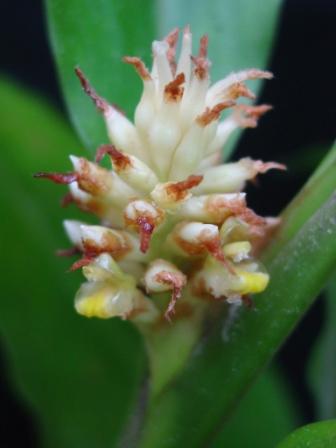
Plagiostachys Ridl.
Roy. Asiat. Soc. 32: 151. 1899.
New distributional record for India, Nicobar Islands.The genus Plagiostachys was established by Ridley (1899). Presently, the genus includes 19 species (Newman et al., 2004), mainly distributed in China and South-east Asia. Present discovery shows that the flora of Nicobar islands is more close to that of Malaysia than to that of Myanmar, Thailand or India.
Read More 
-
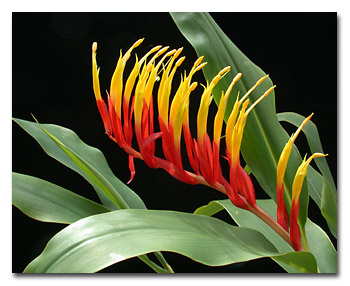
Rhynchanthus Hook f.
Curtis Bot. Mag. t. 6861. 1886
Usually epiphytic. Inflorescence terminal on a leafy shoot with bright red bracts each saftending one orange flower. Lateral staminodes absent and the labellum reduced to a small tooth at the base of the filament. This genus is represented by 6 species distributed in Myanmar, India and South China. This genus is known in India by only its type species ie., Rhynchanthus longiflorus Hook. f.
Read More 
-
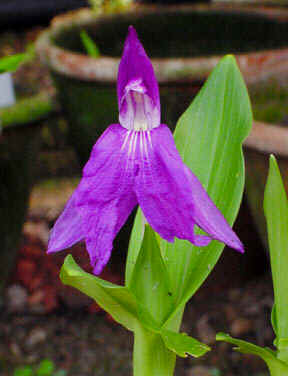
Roscoea Sm.
Exot. Bot. 2:97, t. 108
A temperate genus with 17 species growing in the Himalayan mountain ranges from Kashmir to Meghalaya, Tibet and Western China at 1200 - 5000 m altitudes. The genus is closely allied to Cautleya Hook.. Small herbs with leafy shoot from an erect, rhizome. Flowers in terminal spike, bracts free, flowers purplish.In India 5 species are reported of which 3 are endemic.
Read More 
-
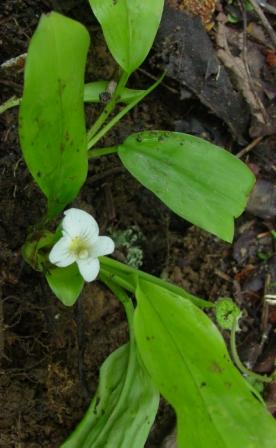
Stahlianthus Kuntze
Revis. Gen. Pl. 2: 697. 1891.
New distributional record for India. The genus Stahlianthus Kuntze is recorded for the first time from India. S. involucratus is recorded from Assam, Meghalaya and Nagaland. The genus is characterized by the possession of an involucre of two bracts fused at the base, forming a bell-like structure, the emarginate or only shortly bifid labellum and the absence of epigynous glands.
Read More 
-
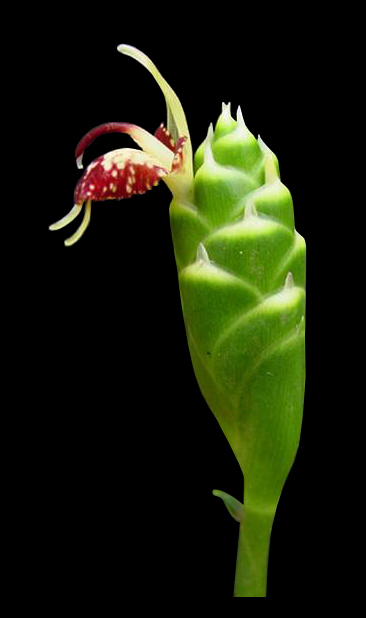
Zingiber Mill.(nom. cons.)
Ludwig. Defin. Gen. Pl. 89. 1760 .
Medium sized herbs with long, creeping, stout rhizomes. The inflorescences arises on a separate shoot, directly from the rhizome, Peduncle may be short or long. Inflorescence with closely overlapping bracts or the bracts forms an open pouches giving cone like appearance. Each bract subtends a single flower. Anther with a characteristic beak like appendage. At present about 141 species have been described. In India only 17 species, 1 variety with 7 endemics were described and mostly distributed in Eastern Himalayas, Eastern India, Peninsular India and Andaman & Nicobar Islands.
Read More 
Musaceae are the most ancient family in the order Zingiberales with three genera, Musa L., Ensete Bruce ex Horan. and Musella (Franch.) H.W.Li. In India Musaceae are represented by about 38 taxa under two genera, Ensete and Musa and is largely distributed in Northeastern States, the Western Ghats, Eastern Ghats and Andaman and Nicobar Islands. During the taxonomic revision of Musaceae in India almost all taxa were collected and conserved in Calicut University Botanical Garden (CUBG). Now CUBG harbours the largest live collection of wild bananas in India. Besides Indian species there are also some exotic ornamental species grown in CUBG.
Maranta-Live Collections of Gingers in the Calicut University Botanical Garden (CUBG). CUBG harbours the largest live collection of gingers in India and third in the world. This include the almost all collections so far reported taxa from India except one or two and also beautiful collection of exotic gingers.
-
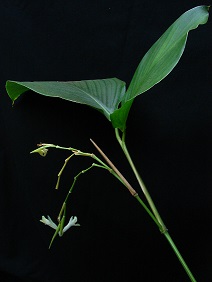
Donax canniformis
....
Donax is a genus of plants.[1] It contains only one recognized species: Donax canniformis (G.Forst.) K.Schum, widespread from the Andaman Islands, Myanmar (Burma), southern China, Southeast Asia, New Guinea, Melanesia and Micronesia.
Read More 
-
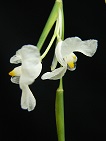
Indianthus virgatus
....
Indianthus is a genus of plants. It contains only one species, Indianthus virgatus (Roxb.) Suksathan & Borchs, native to India, Sri Lanka and the Andaman Islands.
Read More 
-
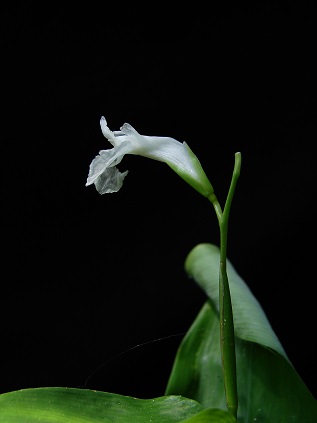
Maranta arundinacea
....
Maranta arundinacea, also known as arrowroot maranta West Indian arrowroot, obedience plant, Bermuda arrowroot, araru, ararao or hulankeeriya, is a large, perennial herb found in rainforest habitats. It is cultivated for a starch obtained from the rhizomes (rootstock), which is called arrowroot. The name 'Arrowroot' lead many ayurveda doctors to use root stock of this plant instead of Curcuma angustifolia ("tikhur" in Hindi,"Koova" in Malayalam) a precious medicinal plant.
Read More 
-
-
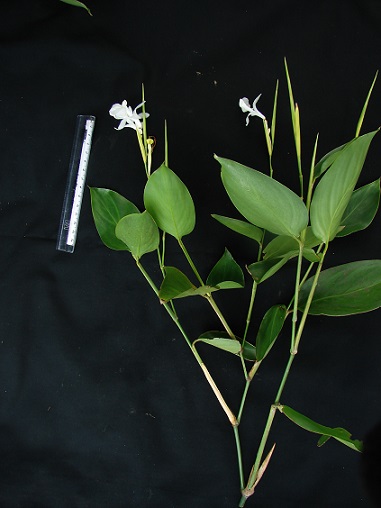
Schumannianthus dichotomous
....
Schumannianthus dichotomus is the scientific name of the plant used for making the Shital pati, also known as the cool mat,[2] a traditional bed mat in Eastern India and Bangladesh..
Read More 
-
-
Costus-Live Collections of Gingers in the Calicut University Botanical Garden (CUBG). CUBG harbours the largest live collection of gingers in India and third in the world. This include the almost all collections so far reported taxa from India except one or two and also beautiful collection of exotic gingers.
The Content For This Category will Be Update soon


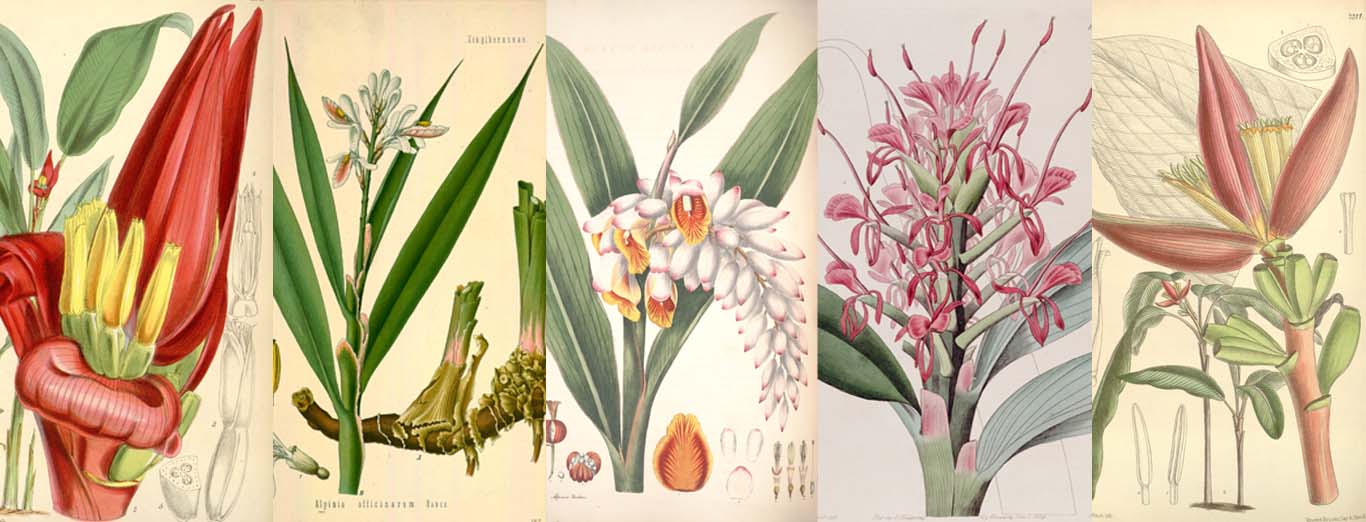



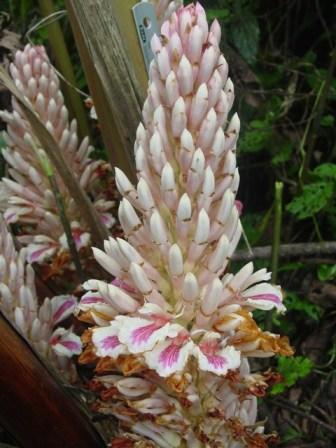











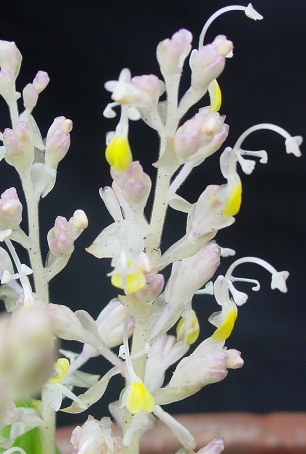
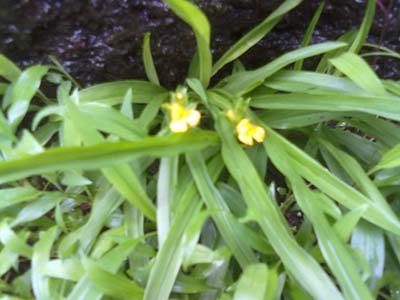






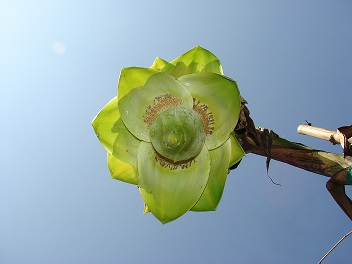
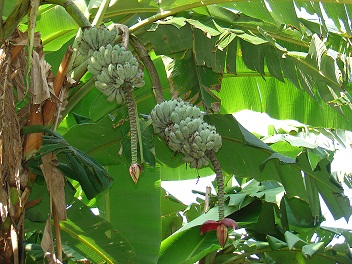



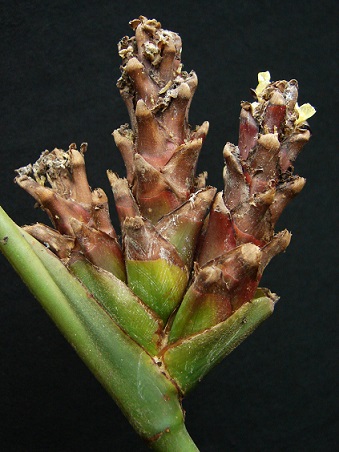

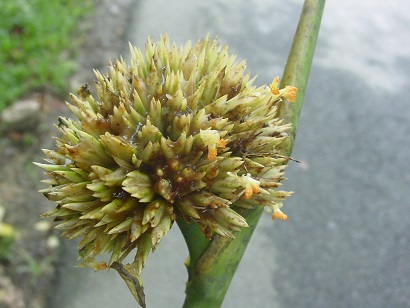

 News & Events
News & Events

